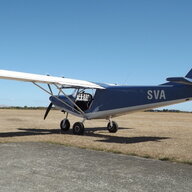Despite the carpet in my kit being precut, fitting it wasn't the pleasure I thought it would be.
I was using Ados F2 contact adhesive from the can on the hull, and from spray cans on the carpet. I'm a fairly tidy worker, but it was messy, with overspray finding it's way onto me, the floor, and anything in the vicinity of the spray area. It had the usual contact adhesive problem that you only got one shot at positioning the carpet piece. And I went through 2 cans of spray with only half the job done.
For the second half, I hit on a better system: I thinned the can of F2. This allowed me to spread it on both hull and carpet with a brush, slowed the drying time, and allowed the piece to be peeled and repositioned if not properly placed.
This was a huge improvement.
The bond is not as strong as using straight F2, but is more than adequate for attaching carpet: 3 years on, nothing has come loose.
For thinning I used what was to hand at the time: 2 way paint thinners. The fumes were awful, fortunately I have a good spray mask.
I now see that Ados do a Solvent N for thinning and cleaning. In the next life I'll be using that......



